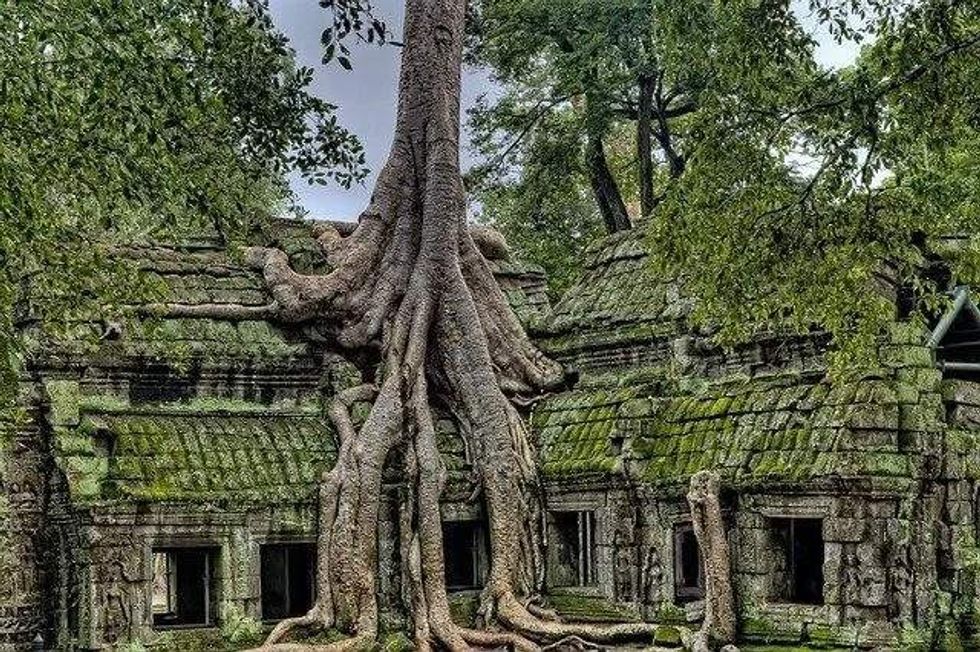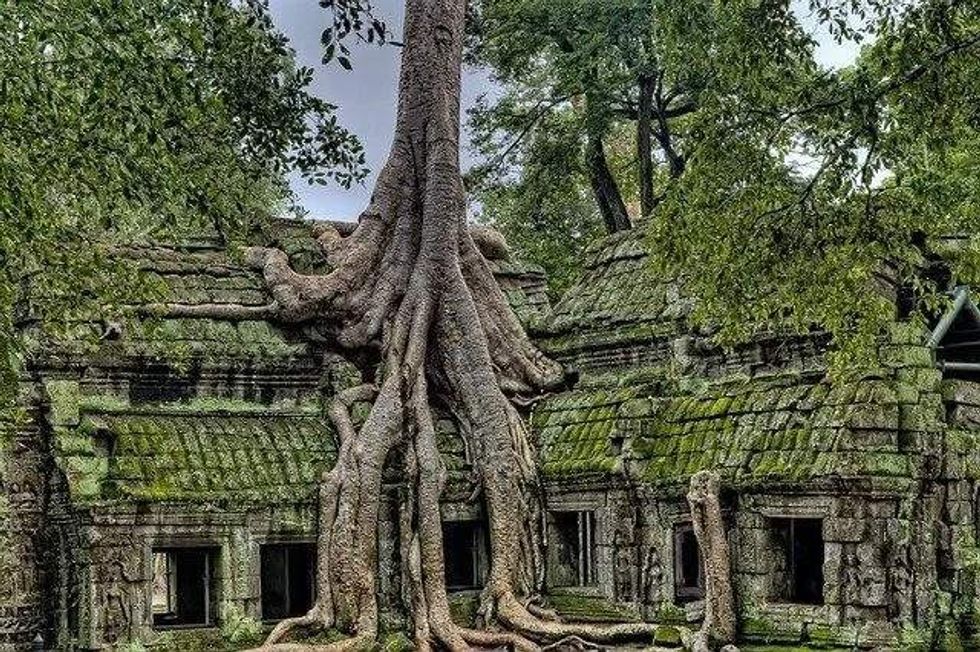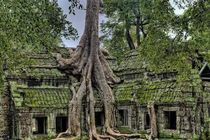79 Unbelievable Cambodian History Facts To Teach Your Kids

Cambodia's rich and unique culture is one of the main reasons many tourists choose to visit this country in Southeast Asia.
Apart from the famous historical sites, Cambodia preserves a very important part of its heritage through traditional art. One of these is the Greet Dance, which has been passed down for generations since the Angkorian era.
While it is common knowledge that much of Cambodia's national treasures were lost, either during the Khmer Rouge regime or under the Vietnam occupation, what is not well known by most is that there are still a number of these traditional arts that are now taught to Cambodian children.
The Greet Dance is one of them, and it is still performed during special events.
The Greet Dance is performed in two traditional styles: with no strings attached and with strings. The former is the more popular style of the two, but both are equally interesting to watch.
Some believe that the Greet Dance might have been passed on by the Khmer Empire, which extended its rule over most of southeast Asia during the Angkorian era.
Cambodia is a low-income country in Southeast Asia that is dependent on agriculture and tourism. It used to be part of the Khmer Empire, until it became independent from France in 1953.
The country is rich in natural resources, but the economy has been sluggish for years due to political instability and meddling from neighboring countries. The Cambodian flag has the Angkor Wat displayed on it.
According to a government poll, the Khmer language is spoken by around 90% of Cambodia's population. The secondary languages of Cambodia are French and English.
Many additional languages have been used in Cambodia throughout its history, although some have gone out of favor or have been totally eradicated as a result of war.
Chinese, Malay, Dutch, German, Thai, and Spanish are among them. The Angkor Wat, Silver Pagoda, Phnom Penh, Angkor Thom, Bayon Temple, or "temple of faces," Baphuon, Banteay Kdei, and Sras Srang are among the notable and historical attractions to visit in Cambodia.
The History Of Cambodia
History is filled with important events that have changed the course of history. All of our lives are affected directly or indirectly by these events. Cambodian history is no different.
The Chenla Empire was a state that once dominated Cambodian territory from 698 to 800 AD.
What set the Funan kingdom apart from its neighbors was that it had established an extensive maritime network across the Indian Ocean.
The name 'Funan' means 'Pheasant's Paradise', which is most likely linked to the Indian word for such a bird, 'phanes'.
The Khmer Empire, or Angkor Empire, was one of the most powerful and advanced empires in Southeast Asia.
It was ruled by King Jayavarman II, one of the most powerful Khmer kings who unified the areas around Cambodia into an empire, which was the beginning of the Khmer Dynasty.
At its height, it had about a million inhabitants that lived within miles of monumental architecture, the Angkor Wat, or the Angkor temple complex - a Buddhist templed - which is dedicated to the Hindu god, Vishnu, and the main capital of Angkor Thom.
Portuguese traders arrived in Cambodia in 1511 AD and established a trading post at the port town of Ream.
After the fall of the Khmer Empire in 1353 AD, there were a series of battles for control over Cambodia until it was eventually taken by Vietnam.
In 1623 AD, King Chey Chettha II paid tribute to the Vietnamese king and gave him control over the provinces of Makara and La Mekong.
His successor, Odech Verjer, staged a revolt against the Vietnamese in 1640 AD.
He succeeded in driving back the Vietnamese until he eventually made peace with them, and again returned to his military campaigns against Thailand.
In 1862, France provoked a confrontation with Thailand over control of Cambodia that led to a war in 1863. In 1874, the French rule succeeded in taking three southern provinces from Thailand at what is now Kratie, Prey Veng, and Svay Rieng.
From 1884 to 1953, Cambodia became a protectorate of France and was ruled by Saigon. During the Japanese occupation, there was no nationalist uprising that broke out in Cambodia, because the Japanese supported new Cambodian organizations formed under their guidance. This was also during the time when World War II was going on.
Cambodia became independent on November 9, 1953, and shortly afterwards, Norodom Sihanouk became its first king. His policies were pro-Western, but after 1963 he allowed for some American presence in the country.
However, it was not until the 1970s that tensions between communist and anti-communist forces escalated. The Vietnam War was also bringing trouble to southern Cambodia and eastern Cambodia.
In 1973, General Lon Nol toppled Sihanouk's government with the help of pro-American Khmer Republic officers.
The Khmer Rouge era was formed at this time as an organization led by Pol Pot, whose goal was to overthrow the corrupt regime of Lon Nol. The civil war continued until 1975 when the Khmer Rouge seized power and renamed it Cambodia Democratic Kampuchea.
In the 1970s, the Democratic Kampuchea was ruled by Lon Nol, and the Khmer people were forced to work on collective farms under a policy of agrarian collectivism.
By 1978, famine was widespread and slave labor had begun on massive irrigation projects, such as the construction of a new port at Kompong Som (Sihanoukville).
The Khmer Rouge regime executed intellectuals, the educated, ethnic Chinese, Buddhists, and Muslims because they were considered enemies of 'Year Zero'.
On January 7, 1979, after a one-week war, Vietnamese forces occupied Cambodia and the capital city of Phnom Penh. Vietnam installed a puppet government called the People's Republic of Kampuchea (PRK) led by Khmer Rouge defectors.
In 1986, Cambodia held its first democratic election, and the multi-party State of Cambodia was formed, which was led by Prince Sihanouk.
In 1989, Vietnam agreed to withdraw its troops from Cambodia, and elections were held in 1993 where a coalition government led by Hun Sen took power in the Cambodian politics, and was ruled by constitutional monarchy.
The United Nations took control of Cambodia on September 15, 1993, after the signing of the Paris Peace Agreement. Elections since 1993 have been peaceful, and more than two dozen parties operate freely without any restrictions.
Thai troops withdrew from Cambodia's western provinces with many people returning to modern Cambodia. The country remains ravaged by the Khmer Rouge, whose leaders are either deceased or on trial for crimes against humanity.
In 1979, the People's Republic of Kampuchea was established, which changed its name to the State of Cambodia in 1989.
As a result, two Cambodian regimes have been ruling since 1979 - the Khmer Rouge regime, which controls parts of the country, and the SOC, which is recognized by the UN.
Prime Minister Hun Sen has been consolidating his power for more than 20 years, with a vision to restore peace and rebuild Cambodia as a whole.
Important Events That Happened In Cambodia
The first king is believed to be the founder of the country. He was known as King Jayavarman II, who is said to be the son of a god and goddess.
It was believed that he was the one who built many temples in Cambodia. King Sreshthavarman was the ruler of Cambodia from the year 600 to 640. He introduced Buddhism as a national religion and established monasteries in different parts of Cambodia.
King Jayavarman II ruled Cambodia from the year 802 to 850. During his reign, Cambodia was previously divided into different kingdoms.
It is during this time that the cities and other sites in Cambodia were constructed. Cambodia was under the influence of Vietnam in the year 1472.
This is because King Borommarachathirat II of the Ayutthaya kingdom in Thailand requested Vietnam's help when he was attacked by his two brothers. However, instead of helping him, Vietnam took control of Cambodia's administration.
King Suryavarman II ruled Cambodia from the year 1113 to 1150. He was known as a powerful ruler during his reign.
This is because he managed to gain control over the lands surrounding the east of Tonle Sap Lake.
He is also recognized as one of Cambodia's greatest kings, for he built beautiful temples both for the Hindu and Buddhist faiths.
The largest among them is the Angkor Wat, which took 30 years to construct. It was completed during his reign.
King Chey Chettha II ruled Cambodia from the year 1618 to 1628. He was one of the weaker kings who was controlled by powerful men.
Thailand and Vietnam began to take control of Cambodia during this period. King Ang Duong ruled Cambodia from the year 1860 to 1884.
He was the last monarch who ruled Cambodia before it was occupied by France in the year 1863.
Norodom I ruled Cambodia from the year 1860 to 1904. It was during his reign that France invaded and occupied Cambodia.
This is because he allowed them to do so. He was forced to abdicate when the French troops arrived in Cambodia's capital, Phnom Penh. Sarit Thanarat came to Cambodia to study at the University of Phnom Penh. He was also an officer in the army of Thailand.
However, he defected to Cambodia when he saw that King Norodom Sihanouk was being forced to abdicate by the French.
Sarit Thanarat then took over Cambodia and established the Sangkum Reastr Niyum. It was a political movement that had many members from different classes in Cambodian society.
King Norodom Sihanouk served as the figurehead of this political party. King Norodom Sihanouk ruled Cambodia from the year 1941 to 1955 and again from 1993 to 2004.
On April 17, 1975, the Lon Nol regime was toppled by the Khmer Rouge.
He was forced to resign as head of state in 1955. It was during this time that King Norodom Sihanouk allied Cambodia with North Vietnam and China against South Vietnam and the United States.
King Norodom Sihanouk was restored to power after Cambodia was liberated from the Lon Nol regime, which ruled Cambodia from the year 1970 to 1975.
The ousted monarch then resumed his duties until he was overthrown again by the Khmer Rouge from 1975 to 1979.
Prince Sihanouk served as the president of Cambodia from the year 1993 to 2004.
He helped his country to move towards democracy by inviting UN peacekeeping troops, which came to be known as the United Nations Transitional Authority in Cambodia, to take control of its administrative and policing responsibilities.
King Norodom Sihamoni is the successor of his father, King Norodom Sihanouk.
He was coroneted as King of Cambodia in 2004, which made him the 14th monarch of the country.
It was also on this date that he abdicated as head of state, which allowed him to become a constitutional monarch instead.

Language Spoken In Cambodia
According to a survey conducted by the Cambodian government, the Khmer language is spoken by approximately 90% of Cambodia's population.
French and English are recognized as Cambodia's secondary languages. There have been many other languages that have been used throughout Cambodia's history; however, some have fallen into disuse or been completely wiped out as a result of war. These include: Chinese, Malay, Dutch, German, Thai, and Spanish.
Phnom Penh is home to many Cambodians who speak both Khmer and French.
The official language of instruction in schools is also French, so this means that for those living in Phnom Penh, it is more likely they will become trilingual rather than bilingual.
Three major dialects are used throughout Cambodia, namely: Central Khmer (standard), Northern Khmer, and Southern Khmer.
Central Khmer is the standard dialect, while people in Phnom Penh tend to speak more French than some other Cambodian regions where English is taught instead.
This means that they do not use the French terms for words like 'hello' or 'thank you', but will say them in their native language.
However, this is a rare occurrence, and most Cambodians would understand what was said if spoken in French or English, due to them being trilingual speakers.
In general, when outside of Phnom Penh, most people will use the Central dialect for their language. Cambodians will often oversimplify their language depending on which languages are around them.
If they are speaking to someone who understands Khmer, the words will be said in Khmer. If not, they may switch to French or English or say it in another way, making it easier for that person to understand what they are saying.
This means that Cambodian is rarely spoken as a first language, as people have become accustomed to speaking more than one language at any given time.
However, this varies from person to person, so some Cambodians may also speak two languages simultaneously, while others may only know one of these languages.
Famous Attractions Of Cambodia
Some of the famous historical places to visit include, the Angkor Wat, Silver Pagoda, Phnom Penh, Angkor Thom (the ancient city ruins of the Khmer empire), Bayon Temple, or "temple of faces", Baphuon, Banteay Kdei, and Sras Srang.
The Angkor Wat is a large Buddhist temple complex in Cambodia and the largest religious monument in the world.
It was originally constructed as a Hindu temple for Vishnu, for the Khmer Empire, but gradually transformed into a Buddhist temple towards the end of the 12th century.
The construction began in the early 12th century by King Suryavarman II.
It is also declared by UNESCO as a World Heritage Site.
The Silver Pagoda is a Cambodian royal temple that houses many Buddha figurines made from silver and gold.
It is considered both a holy place in Cambodia and an important historical site in the country.
Phnom Penh is the capital and largest city of Cambodia.
The first settlement in the area was at Phnom Krom, where a canal from the Tonle Sap River sat near the Mekong River.
It was established as the capital of Funan by the Chinese in AD 184. Bayon Temple is a Buddhist temple located in Angkor, Cambodia, built during the reign of the Khmer king, Jayavarman VII, in the late 12th to early 13th centuries as his state temple and capital city.
Baphuon is a stepped pyramid 30 m (100 ft) high.
Originally, it was believed to be the pyramidal representation of the sacred mountain, Meru, and was a central element of the more broadly based, kingdom-wide Devaraja cult.
Banteay Kdei is a Buddhist temple in Angkor, Cambodia.
Sras Srang is an ancient reservoir and is now a historical park on the southwest outskirts of the Angkor Wat in Cambodia.
The reservoir was built by Khmer King Suryavarman II around 1200 AD to provide water for his growing capital city.
Present-day Cambodia has such beautiful culture as it resembles the elements of Indian culture such as Mahayana Buddhism, Theravada Buddhism, and the god Vishnu.
We Want Your Photos!
More for You
Sources
https://12go.asia/en/cambodia/interesting-facts
https://asiasociety.org/education/cambodia-historical-overview
https://www.tourismcambodia.com/about-cambodia/cambodian-history.htm
https://www.infoplease.com/world/countries/cambodia
https://www.thoughtco.com/cambodia-facts-and-history-195183
https://nomadicboys.com/interesting-facts-about-cambodia/
Bachelor of Arts specializing in English, Bachelor of Education specializing in Secondary Education and Teaching, Master of Arts specializing in English

Anamika BalouriaBachelor of Arts specializing in English, Bachelor of Education specializing in Secondary Education and Teaching, Master of Arts specializing in English
Bachelor of Science specializing in Microbiology, Masters of Science specializing in Biotechnology

Pratiti NathBachelor of Science specializing in Microbiology, Masters of Science specializing in Biotechnology
A Master's in Biotechnology from Presidency University and a Bachelor's in Microbiology from Calcutta University. Pratiti holds expertise in writing science and healthcare articles, and their inputs and feedback help writers create insightful content. They have interests in heritage, history, and climate change issues and have written articles for various websites across multiple subjects. Their experience also includes working with eco-friendly startups and climate-related NGOs.
Disclaimer
1) Kidadl is independent and to make our service free to you the reader we are supported by advertising. We hope you love our recommendations for products and services! What we suggest is selected independently by the Kidadl team. If you purchase using the Buy Now button we may earn a small commission. This does not influence our choices. Prices are correct and items are available at the time the article was published but we cannot guarantee that on the time of reading. Please note that Kidadl is a participant in the Amazon Services LLC Associates Program, an affiliate advertising program designed to provide a means for sites to earn advertising fees by advertising and linking to Amazon. We also link to other websites, but are not responsible for their content.
2) At Kidadl, we strive to recommend the very best activities and events. We will always aim to give you accurate information at the date of publication - however, information does change, so it’s important you do your own research, double-check and make the decision that is right for your family. We recognise that not all activities and ideas are appropriate for all children and families or in all circumstances. Our recommended activities are based on age but these are a guide. We recommend that these ideas are used as inspiration, that ideas are undertaken with appropriate adult supervision, and that each adult uses their own discretion and knowledge of their children to consider the safety and suitability. Kidadl cannot accept liability for the execution of these ideas, and parental supervision is advised at all times, as safety is paramount. Anyone using the information provided by Kidadl does so at their own risk and we can not accept liability if things go wrong.
3) Because we are an educational resource, we have quotes and facts about a range of historical and modern figures. We do not endorse the actions of or rhetoric of all the people included in these collections, but we think they are important for growing minds to learn about under the guidance of parents or guardians.







